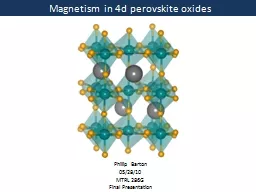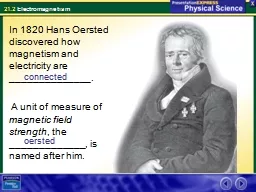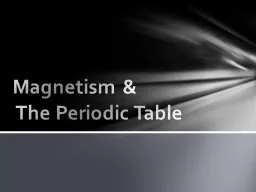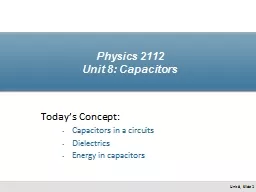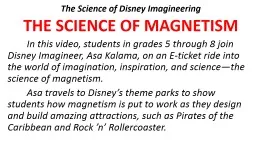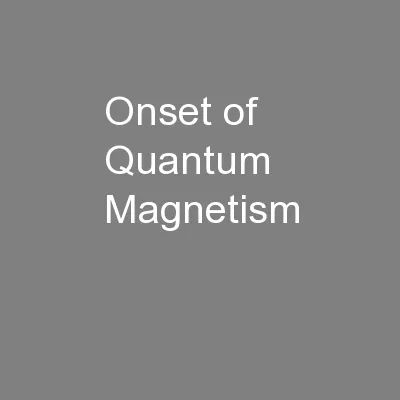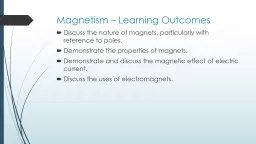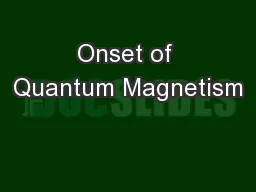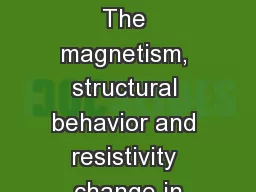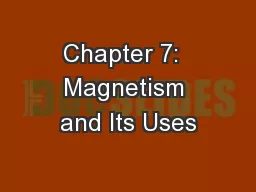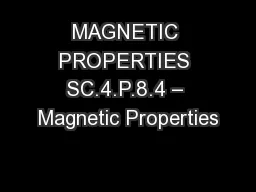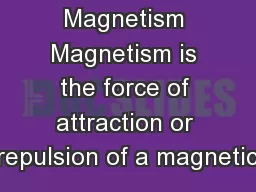PPT-Magnetism in 4d
Author : lois-ondreau | Published Date : 2016-04-13
p erovskite oxides Phillip Barton 052810 MTRL 286G Final Presentation Comparison of 3d and 4d magnetism 3d transition metals Fe Co and Ni are ferromagnetic however
Presentation Embed Code
Download Presentation
Download Presentation The PPT/PDF document "Magnetism in 4d" is the property of its rightful owner. Permission is granted to download and print the materials on this website for personal, non-commercial use only, and to display it on your personal computer provided you do not modify the materials and that you retain all copyright notices contained in the materials. By downloading content from our website, you accept the terms of this agreement.
Magnetism in 4d: Transcript
Download Rules Of Document
"Magnetism in 4d"The content belongs to its owner. You may download and print it for personal use, without modification, and keep all copyright notices. By downloading, you agree to these terms.
Related Documents

